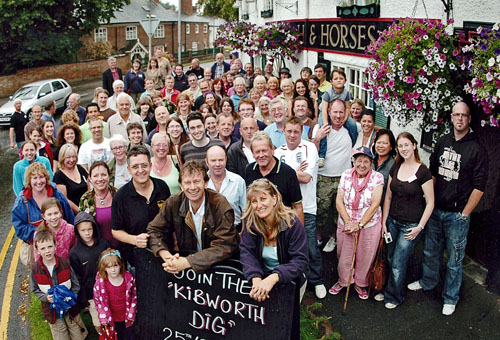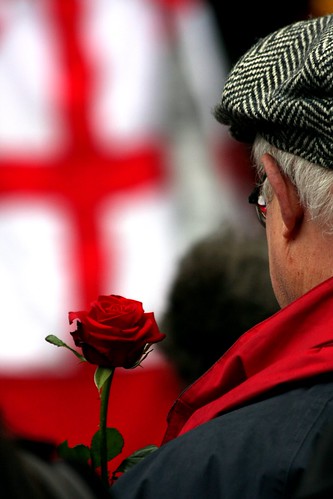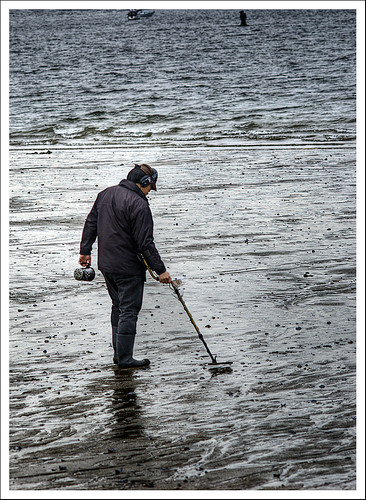 A BBCFour series presented by historian Michael Wood will be examining “The English Story”, which will be exploring the history of England not through monarchs and aristocrats, but through ordinary people. The programmes will be centred around the old parish of Kibworth, Leicestershire in the heart of England, which has a history rooted in Roman occupation, and found itself on the frontline between the Saxon and Viking territories.
A BBCFour series presented by historian Michael Wood will be examining “The English Story”, which will be exploring the history of England not through monarchs and aristocrats, but through ordinary people. The programmes will be centred around the old parish of Kibworth, Leicestershire in the heart of England, which has a history rooted in Roman occupation, and found itself on the frontline between the Saxon and Viking territories.
The series will explore the people of Kibworth’s past through letters, diaries, censuses, medieval tax rolls and the Domesday Book (Find your own past on the Online Domesday Book here), as well as bringing in the current residents to help. Families who have generations of history in the villages were asked to provide a DNA sample so their ancestory could be traced back, and to build a picture of how inhabitants over time came to Kibworth, and how the three villages in the old parish flourished.
The villages – Kibworth Beauchamp, Kibworth Harcourt and Smeeton Westerby have a combined population of approximately 6,000 people who over the past year have been the focus of the new BBC Four series. Notably, the village of Smeeton Westerby is a name of mixed heritage roots – Smeeton, the home of the smiths, is Saxon; Westerby, or western farm, is Viking.
With assistance from the University of Leicester and Cambridge University, residents were invited to dig a small test pit in their gardens to see what was uncovered, with some hope resting on Saxon finds (perhaps the optimists were hoping to uncover a gold horde?). Even the local Coach and Horses pub had the tarmac ripped off it’s car park to excavate the ground underneath!
Finds from the dig, which will be revealed in full when the programmes air this Autumn, included Samian pottery from Roman times, part of an Anglo-Saxon bone comb, 1,200 year old Middle Saxon pottery and prehistoric flint blades. All of the digs were recorded and then analysed in Cambridge.
The programme’s presenter Michael Wood told the BBC, “I’m hoping you’ll get this impression of the fabulous richness of the history at the roots of ordinary people. The farmers, the traders, the railways navis, the canal engineers, the sort of people who made our history not at the level of kings and queens.”
“The English Story” will air this Autumn on BBCFour.





 An excavation of one of the thousands of roundhouses dotted across the landscape of Dartmoor has offered a these-days-rare new insight into prehistoric life on the windswept, rainy plain in the southwest of England. Today its an inhospitable, if undoubtedly striking place. But back in the Bronze Age, when the climate was much milder, it was a hive of activity, cleared by fire of forestry and turned into pasture and farm lands. Its inhabitants left behind the largest concentration of Bronze Age remains found anywhere in Britain.
An excavation of one of the thousands of roundhouses dotted across the landscape of Dartmoor has offered a these-days-rare new insight into prehistoric life on the windswept, rainy plain in the southwest of England. Today its an inhospitable, if undoubtedly striking place. But back in the Bronze Age, when the climate was much milder, it was a hive of activity, cleared by fire of forestry and turned into pasture and farm lands. Its inhabitants left behind the largest concentration of Bronze Age remains found anywhere in Britain.